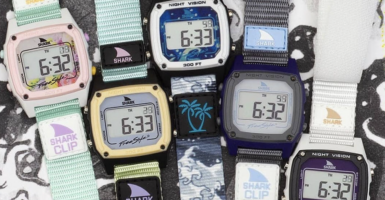Looking Back At The Golden Age Of Air Travel
Hard as it is to believe today, air travel was once seen as a luxurious experience: An occasion for passengers to dress in their finest, be waited on by attentive staff, and eventually arrive at their destination in style.
The postwar years brought new advances in aviation technology, spurring the jet age — and for a few decades, air travel was a prestigious experience. Let’s look back at this memorable era.
Flight attendants met strict requirements.

The iconic Concorde was developed in the 1960s, during the peak of the jet age. This image of a lineup of Concorde flight attendants gives us a glimpse of the high level of service that passengers could expect once onboard.
In this era, the vast majority of flight attendants — generally called “stewardesses” at the time — were young women, with airlines often enforcing strict height, weight, and appearances standards.
Passenger cabins became comfortable.

Before World War II, passenger planes were small, with noisy, unpressurized cabins — but with the advent of jet travel and pressurized cabins, air travel became significantly more comfortable in the postwar years.
This mockup of a jumbo jet cabin shows what passengers could expect in 1960: Generous legroom, wide seats, windows to let in the light, and even lounge areas.
Some planes were privately owned.
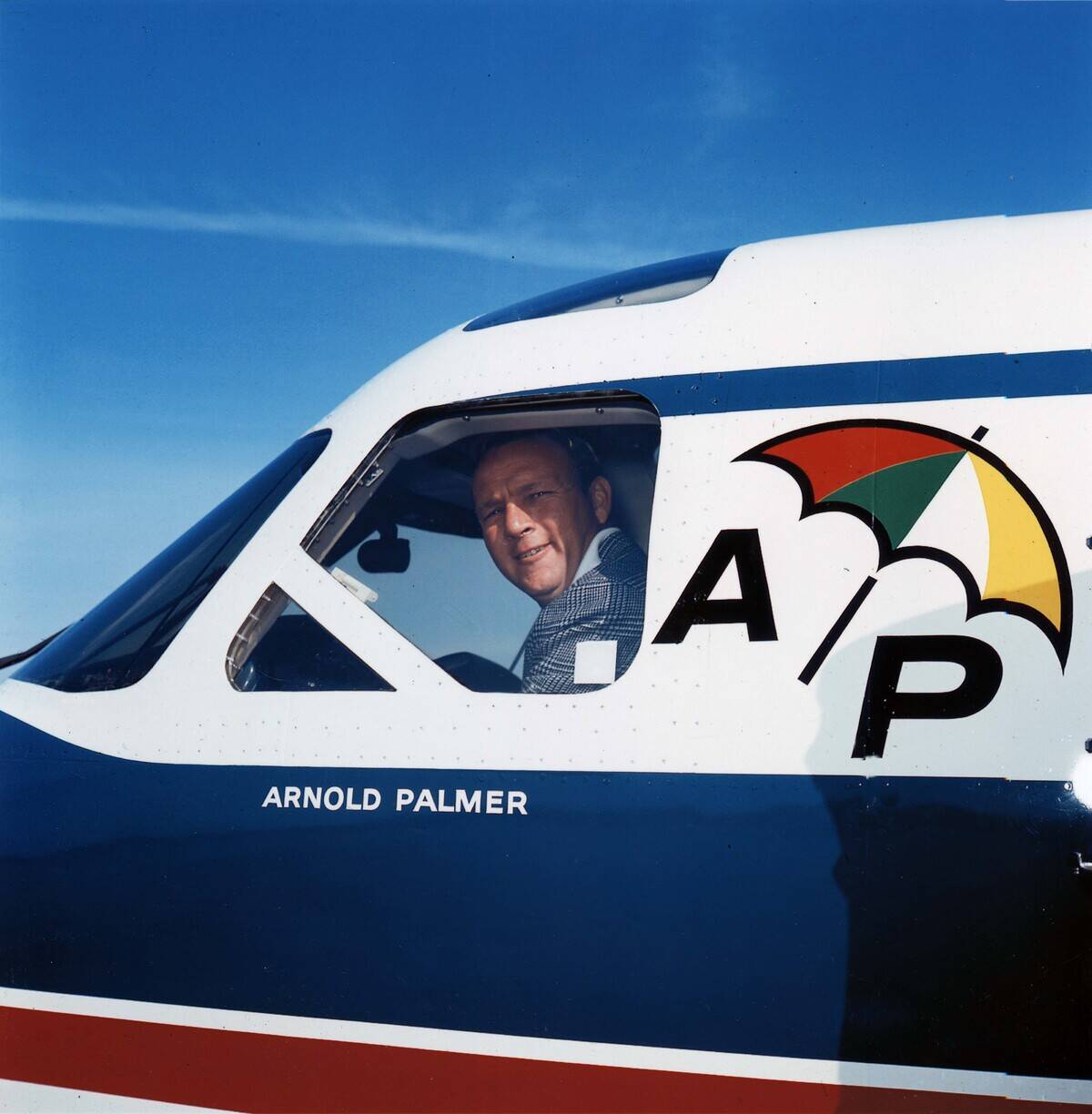
A celebrity owning their own plane is fairly commonplace in the modern era, and this marker of prestige first emerged during the golden age of air travel. This 1965 image shows famed golfer Arnold Palmer in his personal plane, which comes complete with his own logo.
Other celebrities ranging from Frank Sinatra to Elvis Presley to Howard Hughes owned customized aircraft that reflected their personal style and wealth.
Passengers had lounges in the clouds.
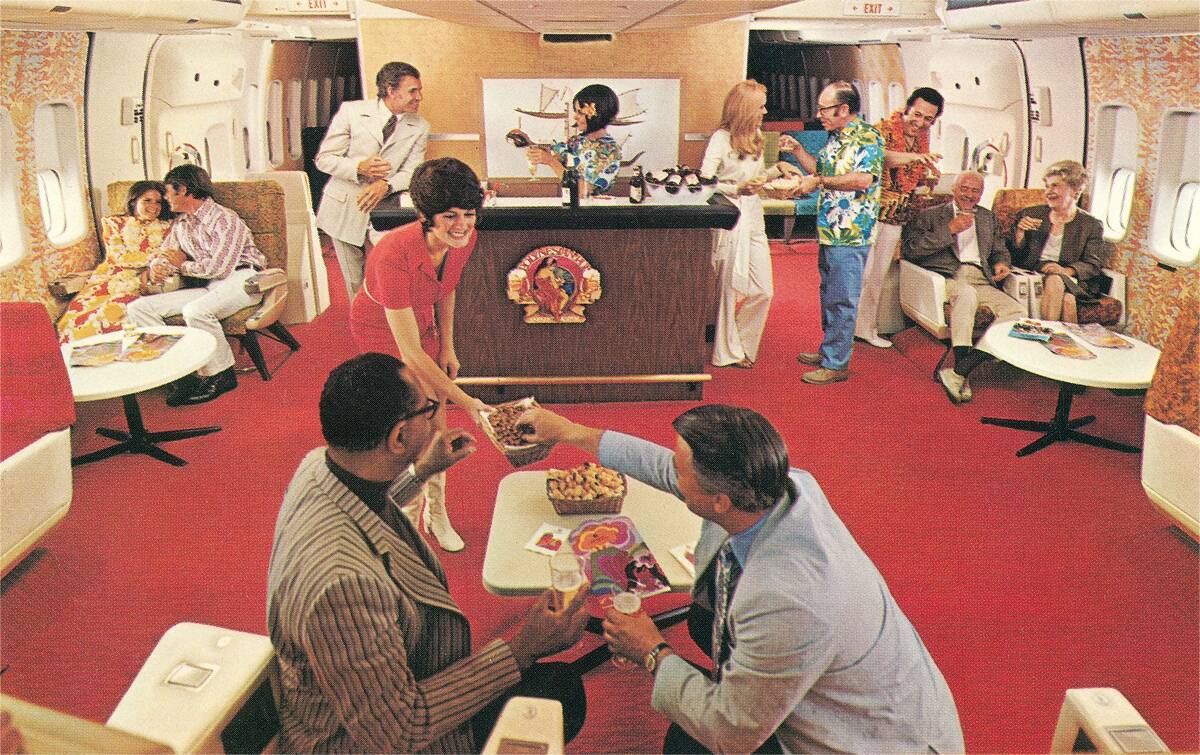
Even the most luxurious modern passenger jets don’t tend to have large common areas for people to congregate and mingle, but this was a hallmark of first class tickets in the 1960s.
These lounge areas, which were found primarily on long-haul flights, mimicked the ambiance of high-end cocktail bars, with plush couches, full-service bars, and mood lighting.
It was easy to catch a few winks.
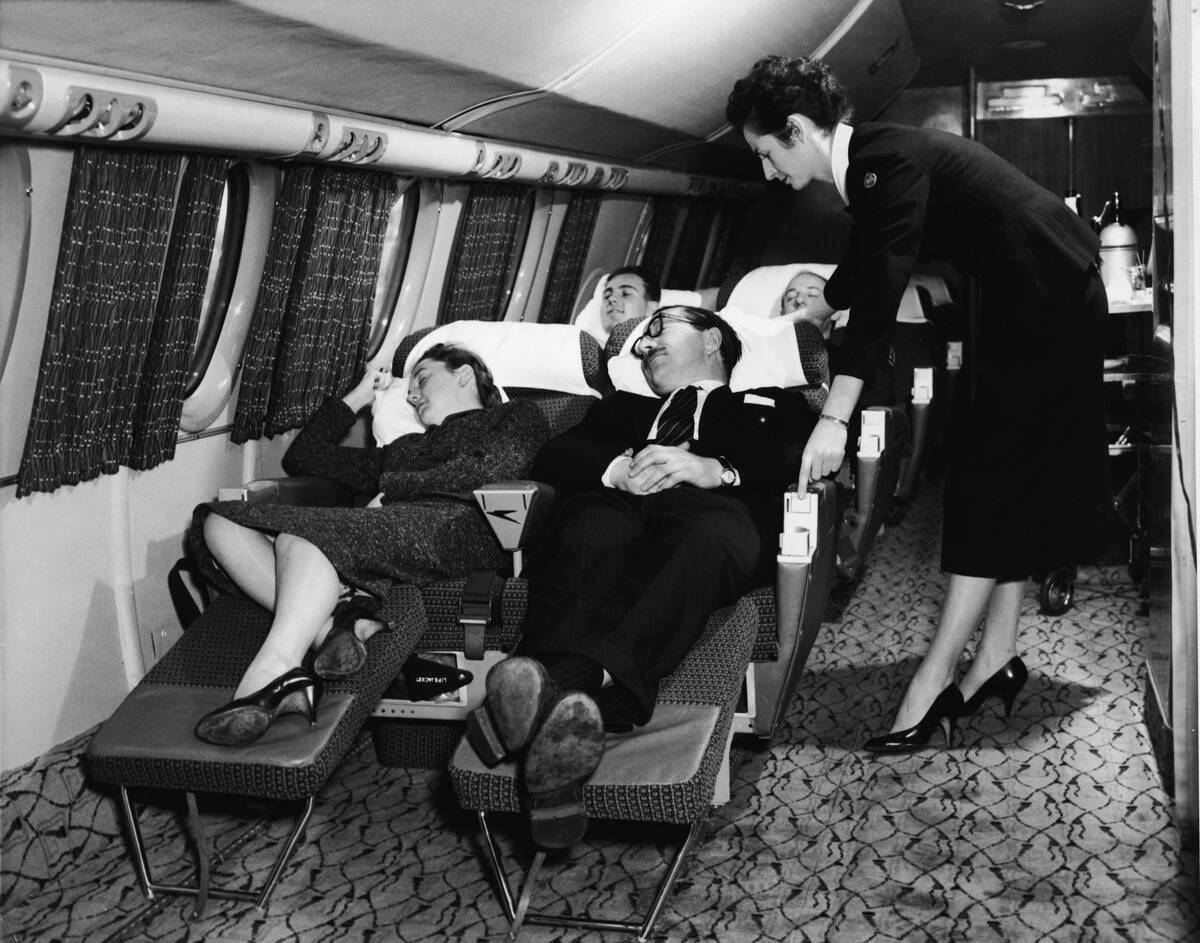
Modern transcontinental airlines offer sleeping pods to their first-class guests, but in the golden age of air travel, comfortable sleeping accommodations were far more widespread.
While these passengers don’t have the amenities of a modern sleeping pod, they do have seats that recline almost all the way back, along with a prop-up footstool and ample legroom.
Smoking was commonplace.

Anyone who remembers the midcentury years can attest to the fact that many public areas were constantly enveloped in a blue-grey haze thanks to the fact that virtually everyone smoked.
This factored into air travel as well, as it took years for airplanes to phase out smoking. The golden age of air travel is easy to romanticize, but it’s important to remember that plane cabins would have been very smoky places.
Private jets entered their modern era.

This vintage photo of Queen Elizabeth II and Prince Philip during a quiet moment on their private jet doesn’t look much different from the private jets of today.
The image underscores not just the fact that luxurious private jets have now existed for decades, but also that the royal family was changing with the times. While they’d once been loyal to ocean liners and royal yachts, that slowly began to change.
It wasn’t all first class travel.

This lively 1960 photo shows the interior of a BEA Vickers passenger section just as the flight attendant gets ready to serve lunch to those in the cabin.
While these are not first class passengers, most are dressed up, indicating that they saw air travel as a special occasion.
In-flight meals were luxurious.
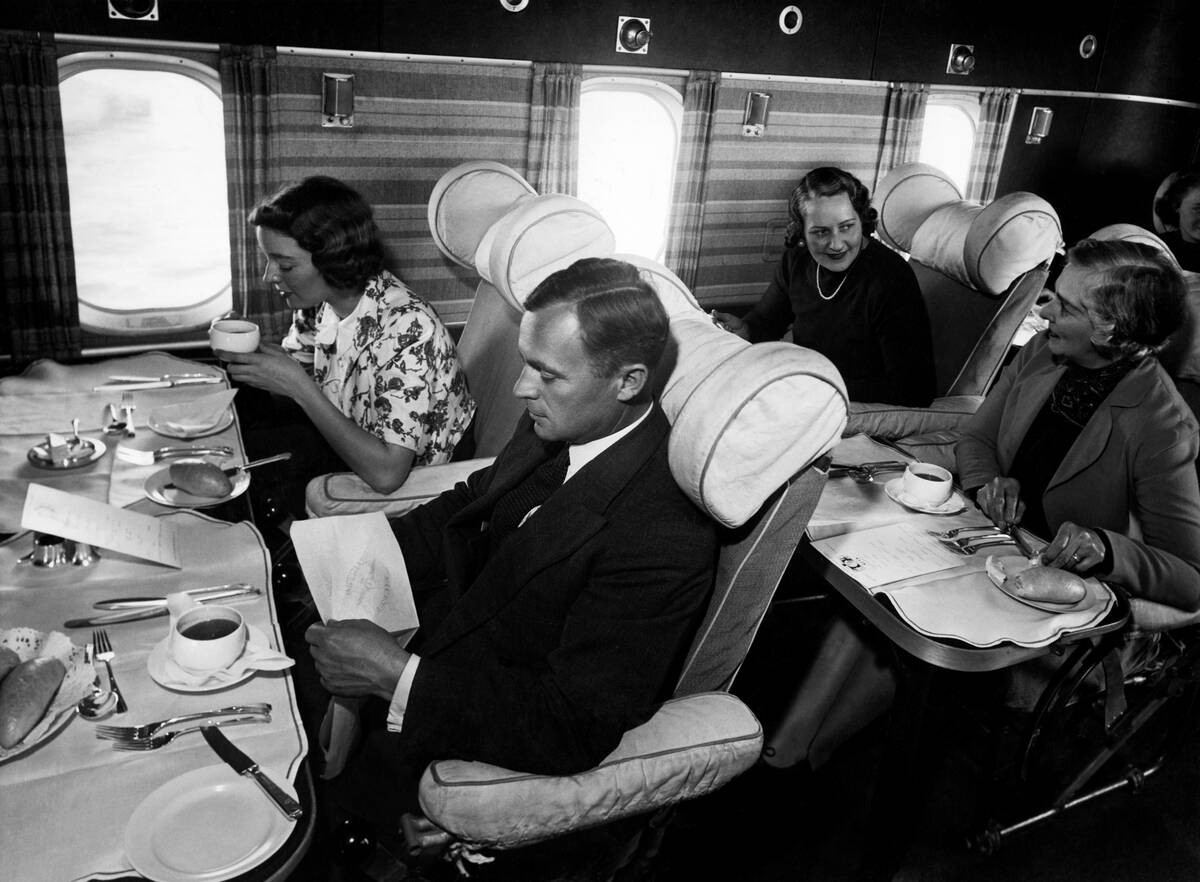
Even the finest meals on modern flights tend to fall flat, with utilitarian food choices served on microwave trays. But in the midcentury years, passengers could expect full-course meals — even in economy class.
Adding to the sense of luxury was the fact that most meals were served on real plates, with metal cutlery and linen napkins. The finer the ticket, the finer the meal, with first-class meals being close to fine dining.
Passengers could expect constant service.
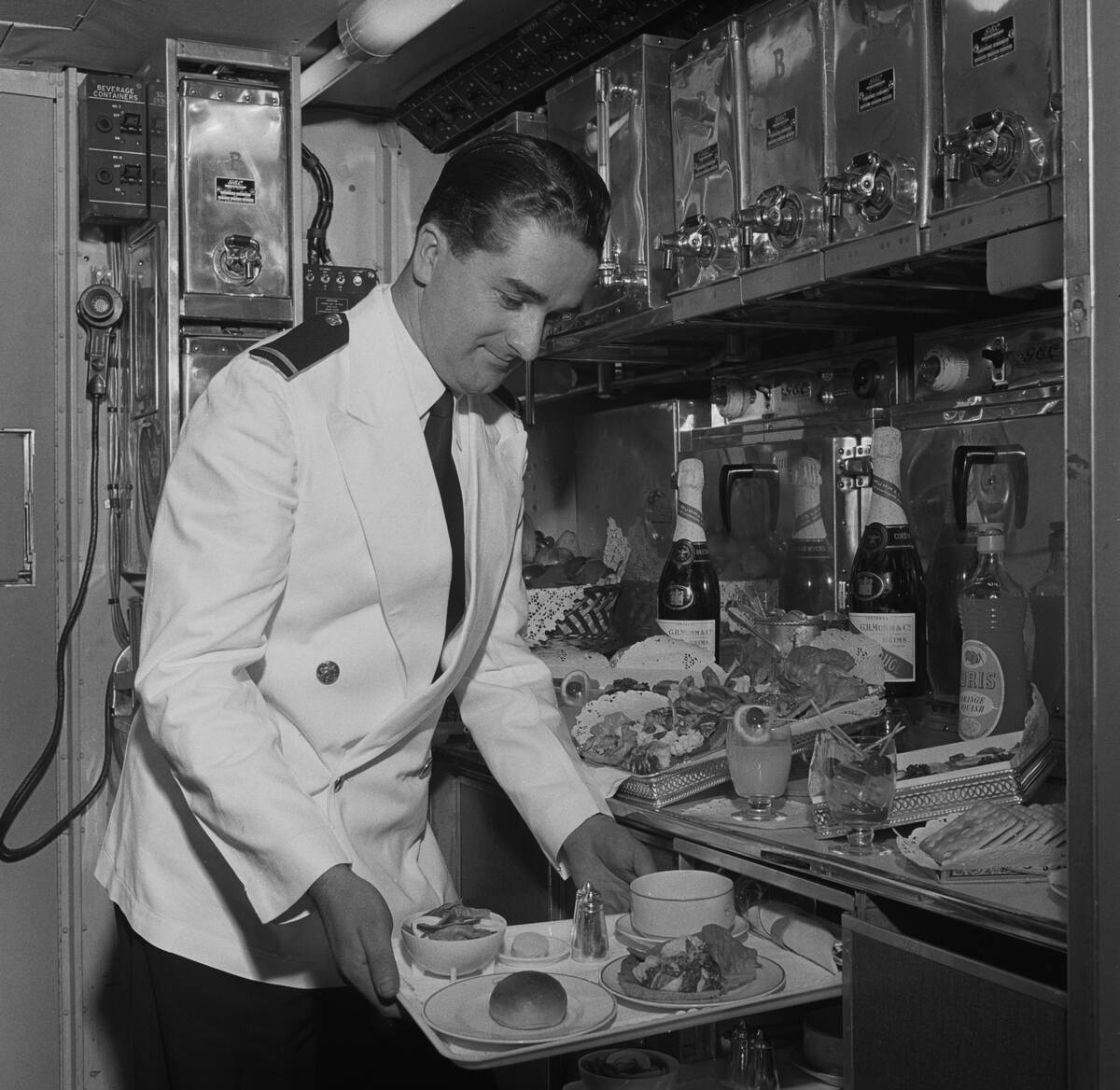
This 1957 photo shows a male flight attendant (or “steward”) carrying a tray of food in the galley of a Bristol Britannia turboprop airline. An assortment of snacks can be seen on the counter.
This is effectively the 1950s version of a flight attendant’s first pass-through, when passengers are offered drinks or basic snacks — except instead of a can of soda and a bag of pretzels, passengers could expect champagne and fine cheese.
Planes weren’t crammed full of seats.
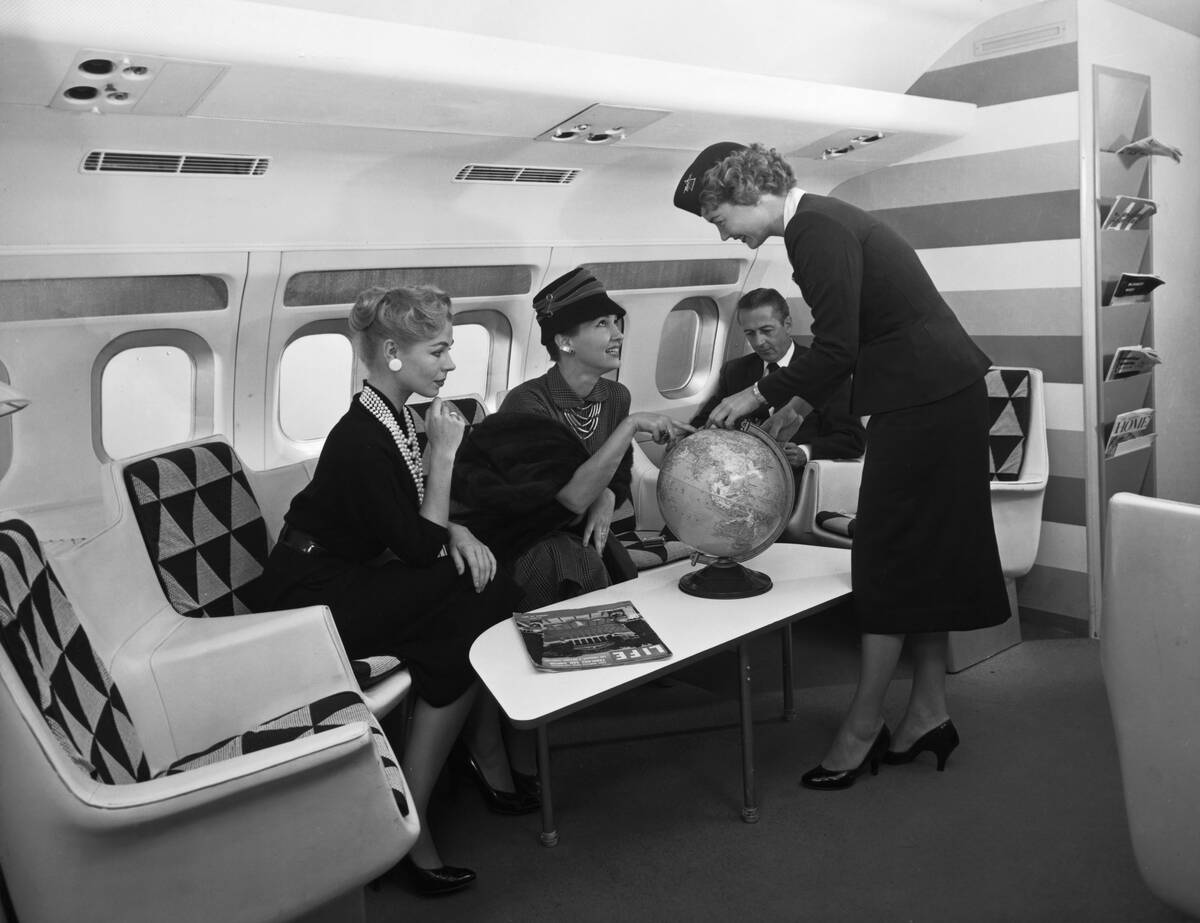
Over the decades, economy became the name of the game for airlines, with designers working to fit as many seats into the available cabin space as possible.
This image of a Convair 880 lounge shows that priorities were different in the 1960s. While the lounge space was a welcomed public area, it occupied space that could otherwise be used for passenger seating.
The jet set earned their name.
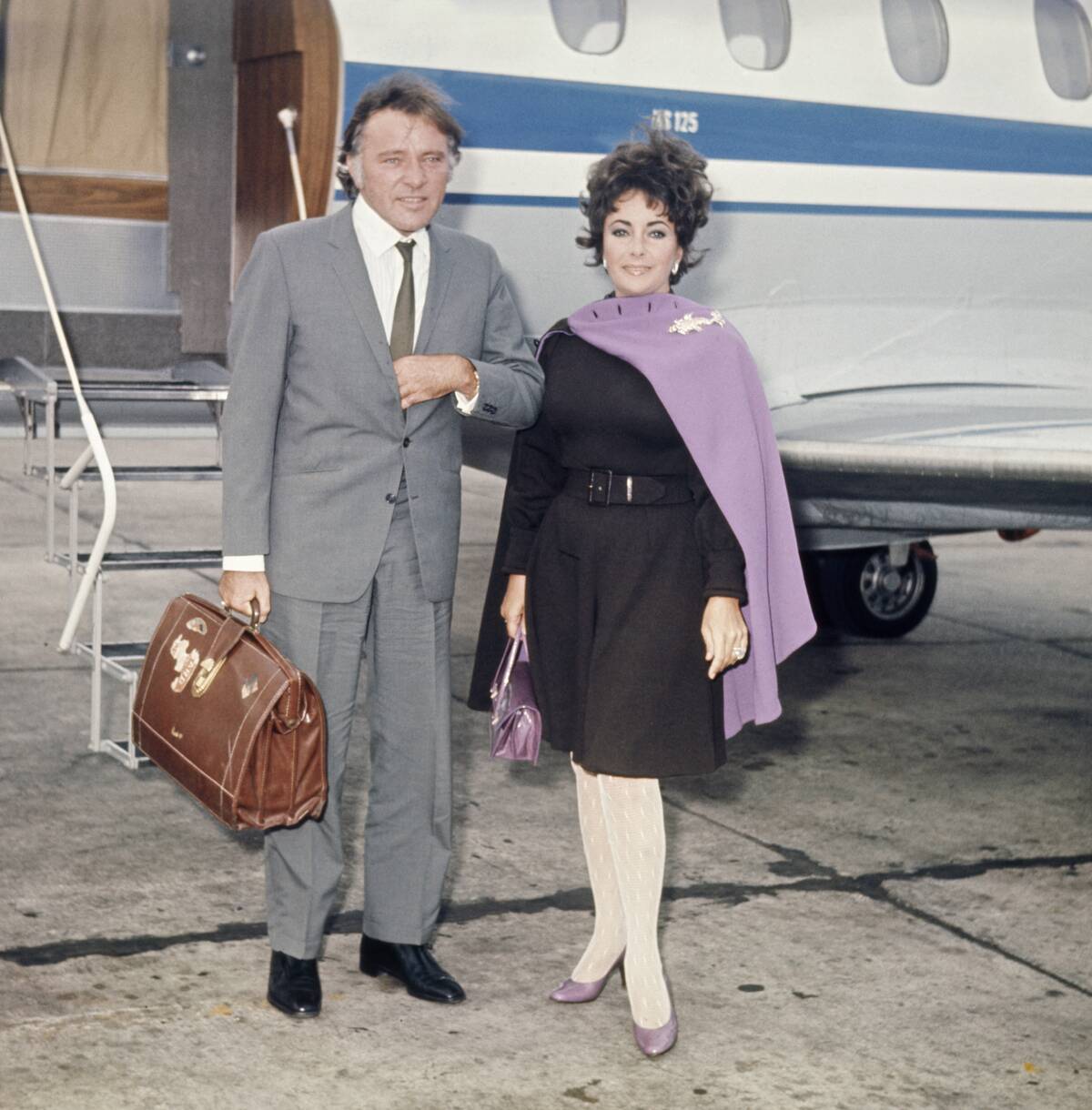
In the 1950s and 1960s, the concept emerged — among the wealthy, at least — of being “bicoastal” or “transatlantic,” which effectively meant living life in several different, far-flung areas.
This 1967 image of movie stars Richard Burton and Elizabeth Taylor perfectly encapsulates this, as the couple had just arrived in England from the United States. Just a few decades prior, it would have been impossible to cross an ocean in a few hours.
It was a different kind of travel.
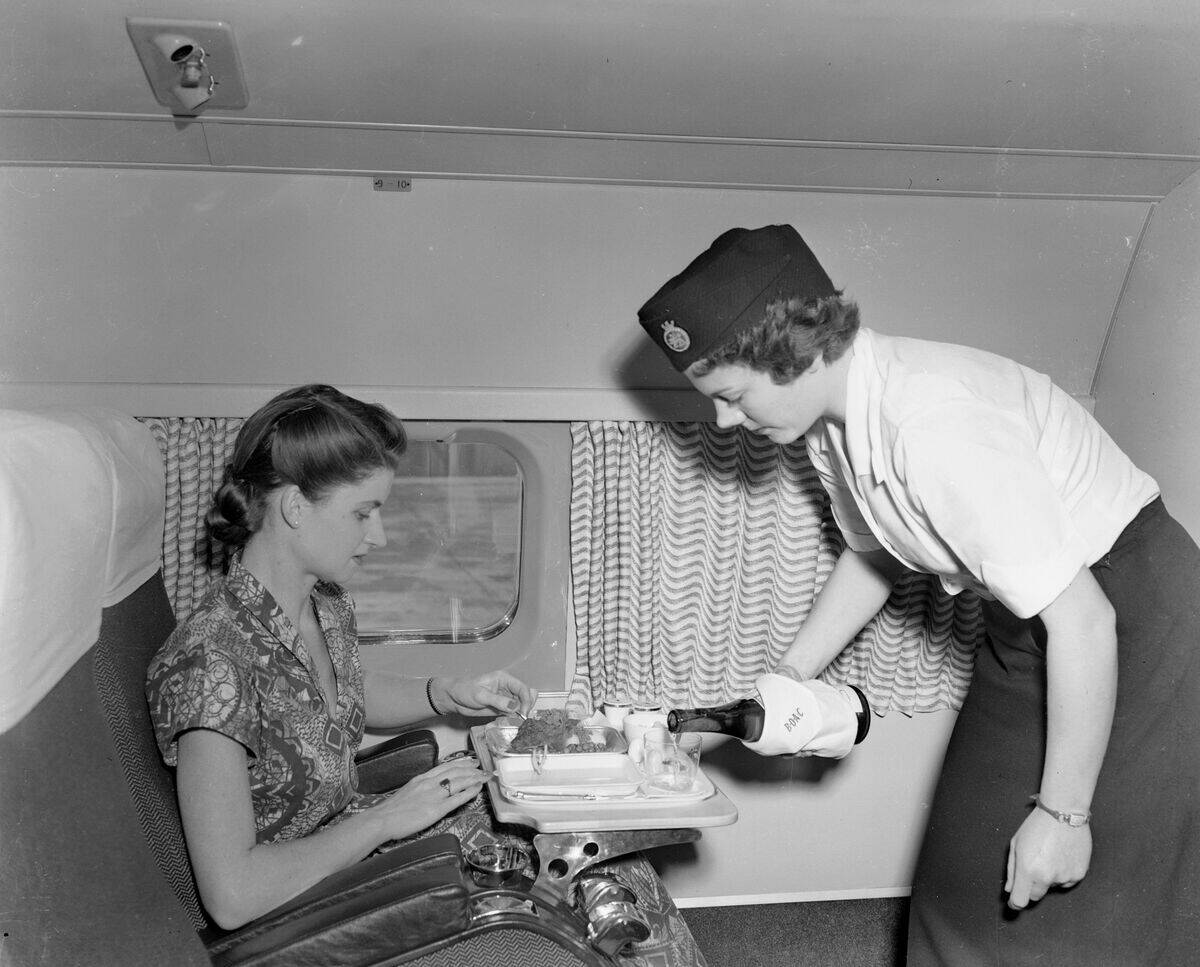
Ocean liners, the primary means of long-distance travel prior to the jet age, were somewhat akin to a big hotel: While passengers would have a bed, the rest of their time would be spent exploring the ship’s amenities.
Because planes could reduce travel times significantly, this concept was upended, with passengers largely being confined to a seat. With the luxuries and convenience of the jet age, however, most hardly minded.
Those luxurious meals had to come from somewhere.
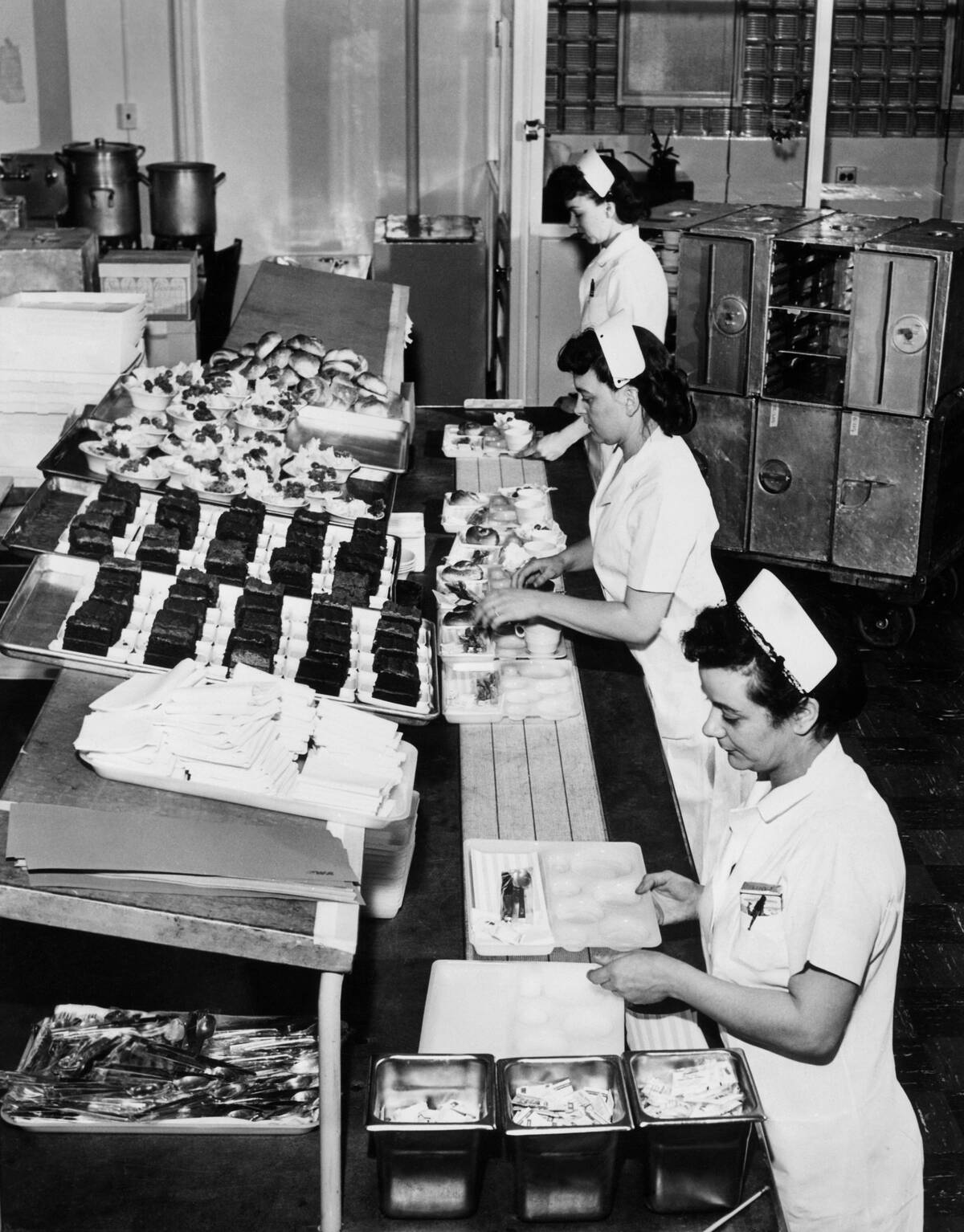
Airplanes simply don’t have enough space for a full-sized kitchen, which means that meals need to be prepared in advance, so flight attendants can put the final touches on them before serving them to passengers.
This is true today and was also true in the 1950s — but in the 1950s, meals were not prepared by a faceless food service conglomerate, but by chefs in an airport kitchen.
The 747 was a game-changer.

The Boeing 747 became synonymous with the term “jumbo jet”, as the wide-body jet revolutionized air travel when it entered service in 1970.
A 747 was the first plane that could carry over 400 passengers and also featured advanced fuel efficiency and a longer range. At first, the 747 had many of the luxurious trappings of other contemporary planes — but as the years wore on, airlines removed many of these niceties in the name of economy.


